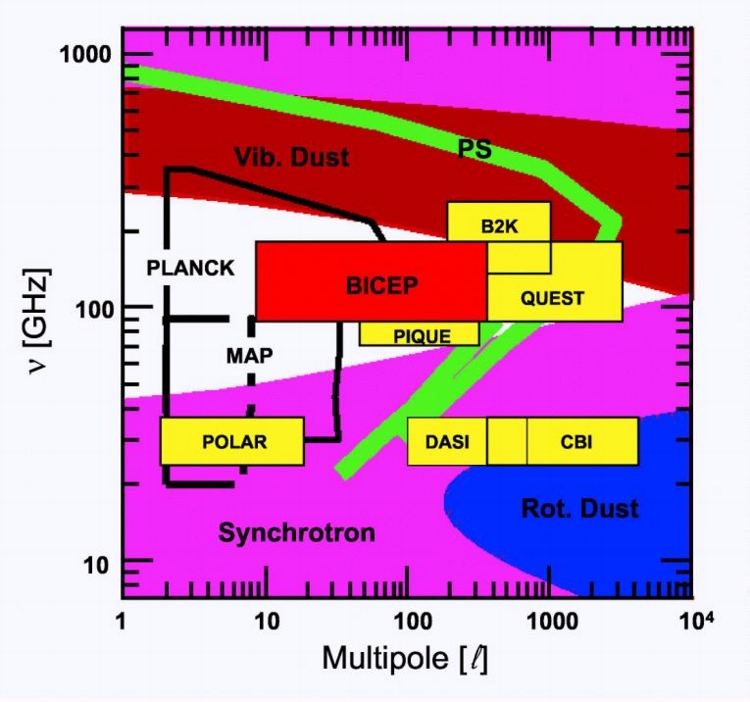From their location (near competing experiments) at the Amundsen-Scott South Pole Station they have been working toward what sounds like a simple goal - to try and get firm evidence of the cosmic microwave background at the moment after the Big Bang. The hypothesis of an inflationary epoch - where the size of the universe underwent exponential expansion during its first 0.00000000000000000000000000000000000001 (10 -38) second - and recent observations suggesting just that, mean the hunt has been on to find evidence of ancient gravitational waves Einstein predicted.
An upcoming press conference means we might be close to getting some confirmation, which would bring us a step closer to ruling out other models of the early universe.
It's not as easy as it sounds. Finding a gravity wave background (GWB) in all that data, and factoring in the effects of gravitational lensing (matter - energy density - can curve spacetime and that can deflect the path of a ray of light) in how it is polarized after all this time, is daunting. The ability of gravitational lensing to create a false GWB signal, along with galactic dust and synchrotron polarized emissions, mean that the results will undergo heavy scrutiny, including by competing researchers who are searching for the exact same thing.

Comparison of estimated polarized foregrounds from synchrotron (magenta), vibrational dust (red), rotational dust (blue), and point source emission (green) from the "middle of the road" Tegmark et al. (1999) model. The shaded regions indicate where the foregrounds contribute more than 0.8 µK. Credit and link: Caltech
At 9 AM Pacific Time on Monday, Harvard-Smithsonian Center for Astrophysics is going to make an announcement and what they might reveal is just speculation and rumor. University College London astronomer Hiranya Peiris gave Stuart Clark at The Guardian a great quote: "But if they do have a robust detection … Jesus, wow! I'll be taking next week off."
There's a lot that can go wrong, of course, supraluminal (faster than light) neutrionos taught the lesson quite recently that nature is not going down without a fight, but it could be exciting stuff.
Read more:
BICEP - Caltech Observational Cosmology Group
H/T Real Clear Science




Comments